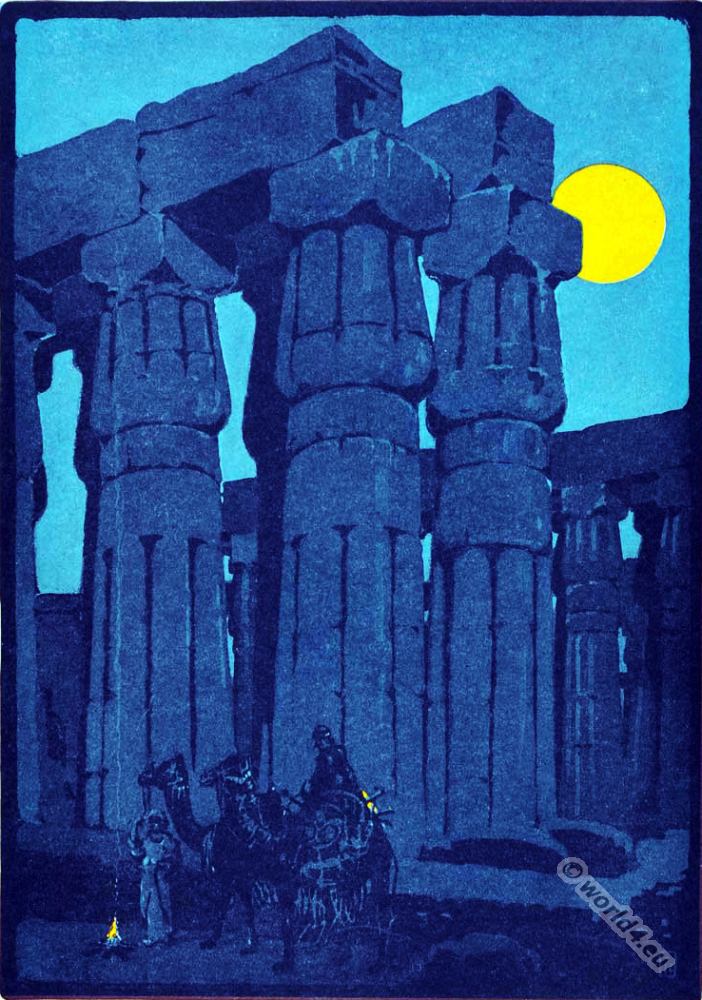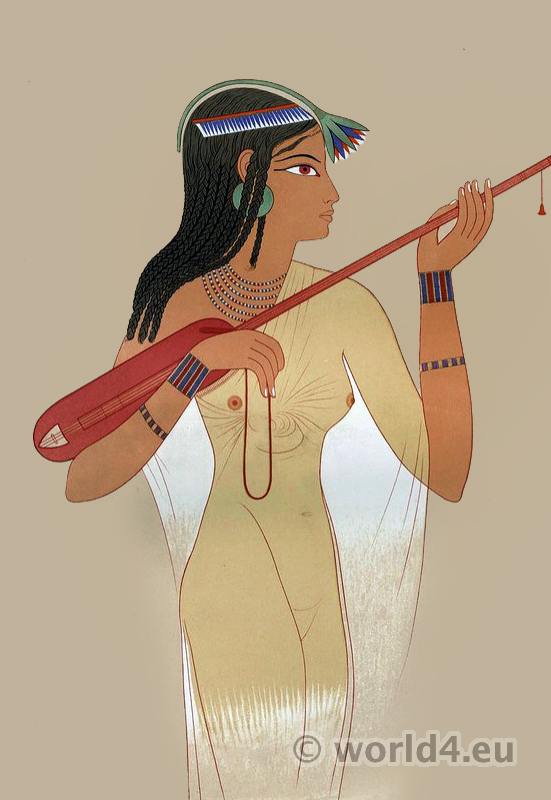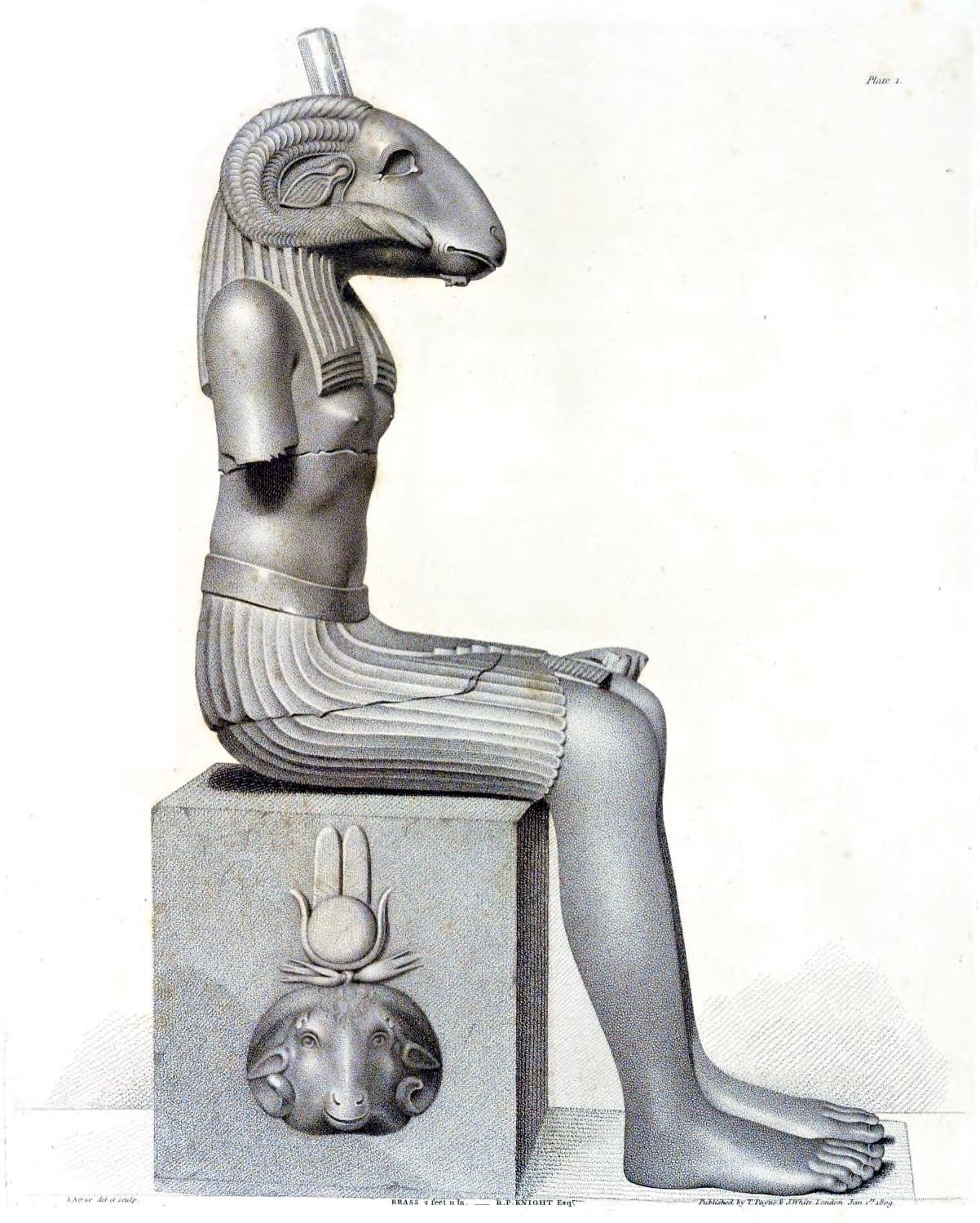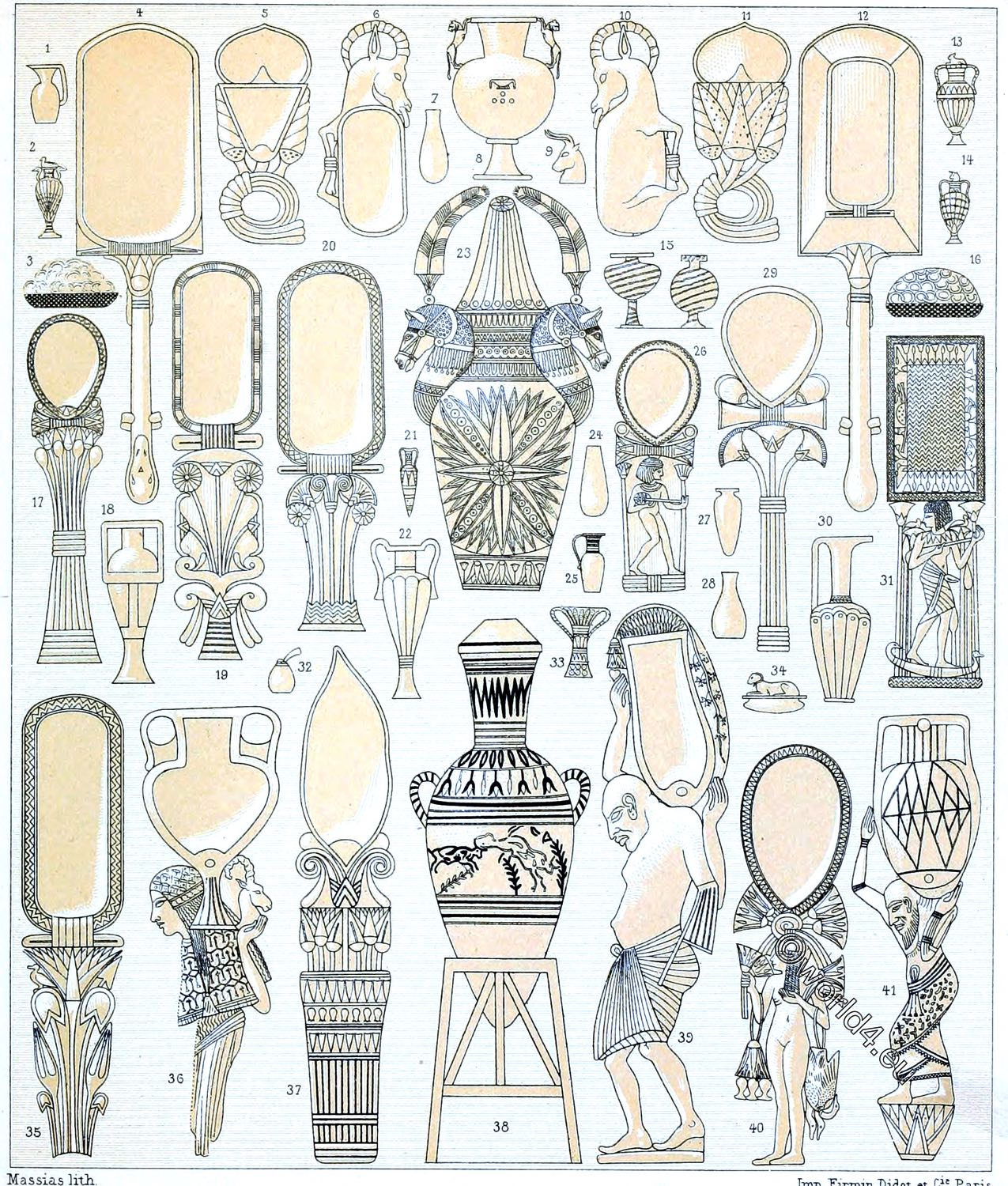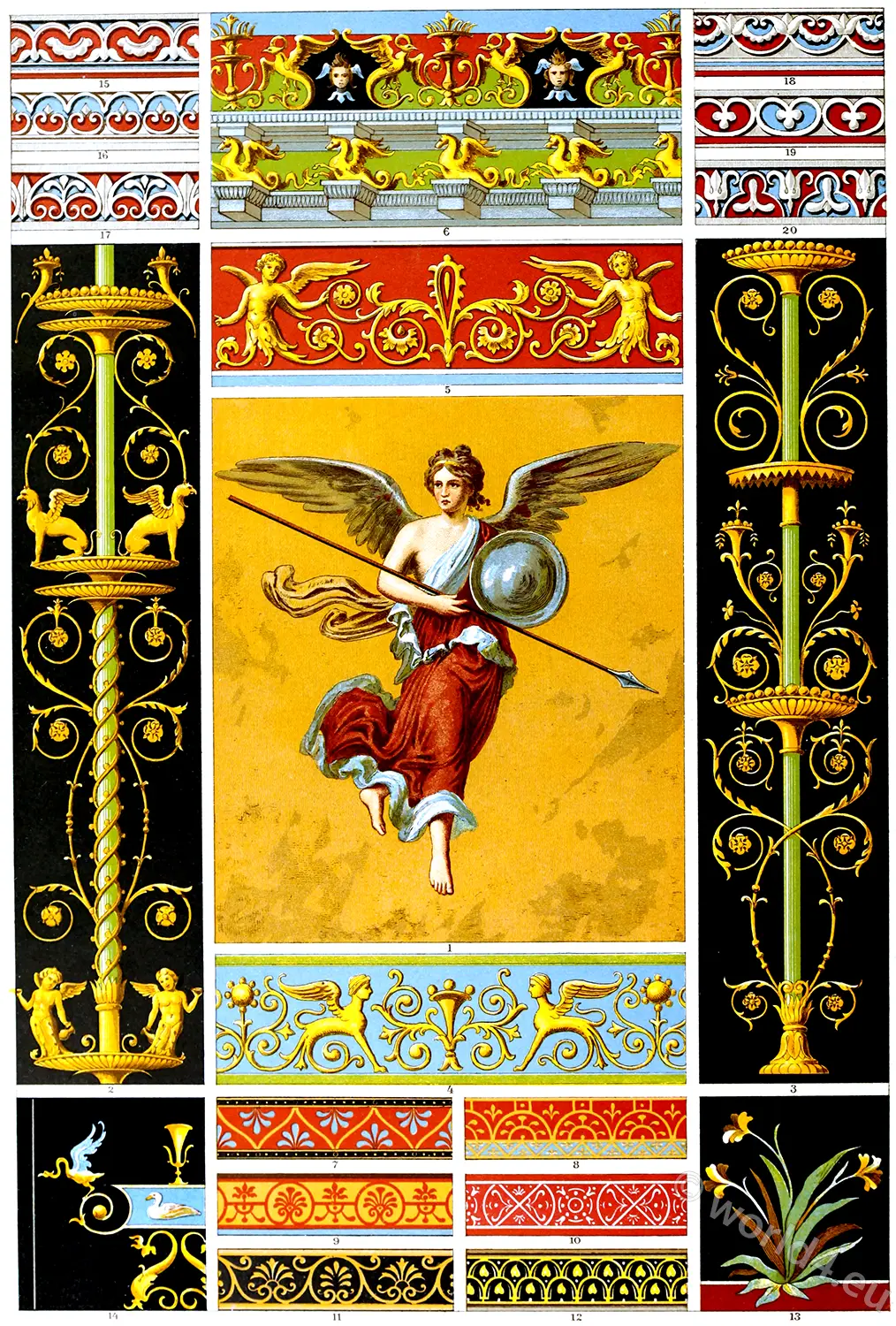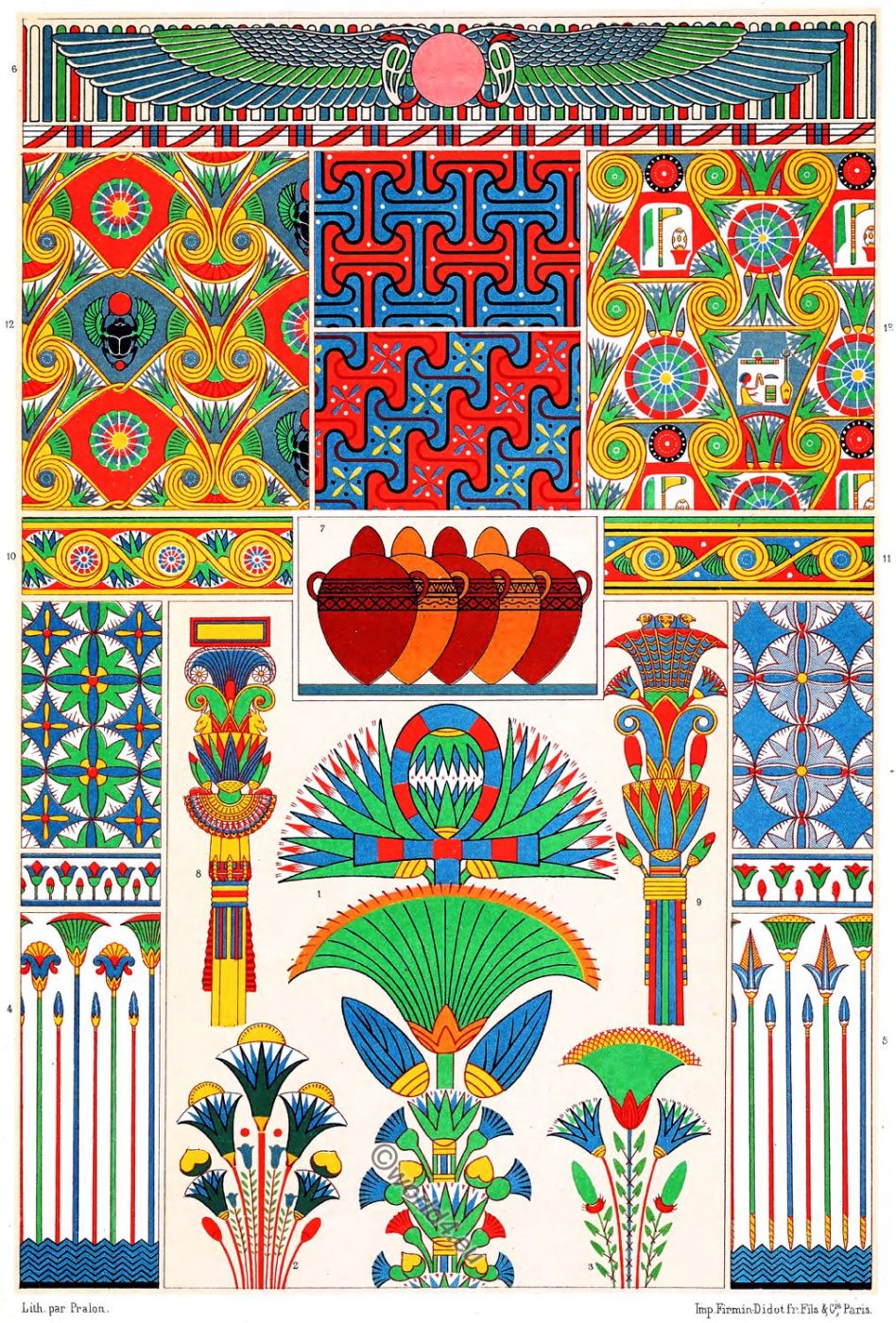
EGYPTIAN ART. DECORATIVE PAINTINGS.
THE signification of the principal objects employed in Egyptian ornamentation is generally to be found in the language of hieroglyphics.
Thus, for instance, the pink sphere with hawk’s wings (No. 6) represents the rising sun.
The water-flowers mingled with reeds in the lower part of the plate (Nos. 4, 5) are types of running water. The Scarabaeus (No. 12), the black color of which renders it so prominent, symbolizes immortality. The flowing ornaments (Nos. 10, 11) from which the Greeks afterwards made Vitruvian scrolls, signifying the rolling of the waves of the sea, had also a certain meaning in the language of Egyptian artists.
Red, blue, and yellow were the principal colors employed, with black and white to define the outlines; green was used more particularly as a local color, for stalks and parts of flowers, but in the more ancient paintings blue was frequently substituted for it.
Nos. 1, 2, 3. Painted bouquets.
Nos. 4, 5. Grounds, borders, and bases from Thebes.
No. 6. Painted sculpture, from the Memnonium at Thebes.
No.7. Undulating friezes.
Nos. 8, 9. Painted sculptures. Little wooden columns.
Nos. 10,11. Undulating friezes.
No. 12. Ceilings.
From the publication of the French Egyptian Commission and M. Prisse d’Avegnes. (Monuments égyptiens, 4 vols. folio; Paris, Didot.)
Source: Polychromatic ornament by Auguste Racinet. London, H. Sotheran and Co., 1877.
Related
Discover more from World4 Costume Culture History
Subscribe to get the latest posts sent to your email.


